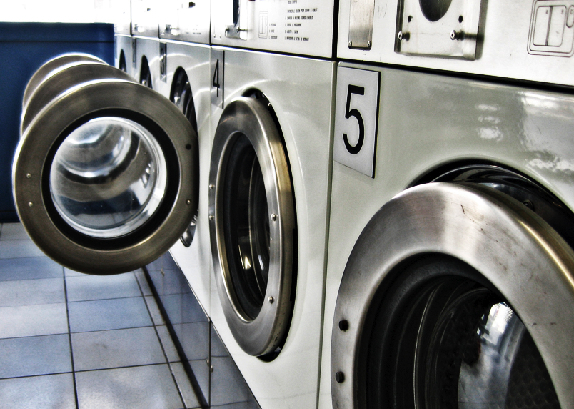The launderette still has a cool, retro quality to it. Despite advances in washing machine technology and the near ubiquitous nature of such machines in households around the world, there is still a need for industrial, commercial sized washing machines. Perhaps a flat, such as an attic apartment, does not lend itself to accommodating a washing machine. Maybe there are oversized items such as duvets or sleeping bags which need cleaning, or heavily soiled work wear that is covered in oil and would leave deposits in a regular machine and thus requires something dedicated to such levels of dirt.
The first launderette or ‘washateria’ opened in Texas back in 1936. In the rest of the United States they came to be known as laundromats. Unlike staffed laundries, the Fort Worth branch was unmanned and coin operated. The word “laundromat” was coined by George Pendray on behalf of the Westinghouse Company.

In the UK, everyone knows them as launderettes or laundrettes. The first one opened in 1949 on Queensway in London and they have been a popular fixture of the urban and suburban landscape since the 1960s. Today their numbers have been reduced to about 3,000 across the UK. Their decline has been due in part to rising utility costs, increases in rent costs, the high cost of equipment and the servicing of that equipment. Although household machines have become larger and more efficient, some items are just too big to fit in them. However, while in the past this would mean a trip to the launderette, with the advent of low cost bedding from the large supermarket chains, it is now unfortunately sometimes cheaper to throw away a duvet and buy a new one.
While the future is not certain for launderettes, they do have a special place in people’s hearts. They provide a valuable service to the community for people who either do not have their own machine, find their machine has broken down or, as mentioned, have oversized items. They have also found their way into popular culture. In 1985 a TV commercial designed for a primarily Northern European audience with singer and model Nick Kamen aired and became an instant hit worldwide. The young man played by Nick was seen walking into a 1950s style American laundromat, where he proceeded to pour stones into one of the washing machines before stripping down to his boxer shorts – all this to the tune of Marvin Gaye’s ‘Heard it Through the Grapevine’. In the same year, the character Dot Branning from Eastenders took over the running of the launderette which has continued to be a central location in the soap opera.
Going forward, the future of launderettes is relatively secure as they diversify into valued added services like dry cleaning, service washes and ironing services. These are especially useful to busy professionals, students and the elderly.
Jonathan Fox writes on behalf of OPL Ltd and covers topics on commercial laundry equipment.

